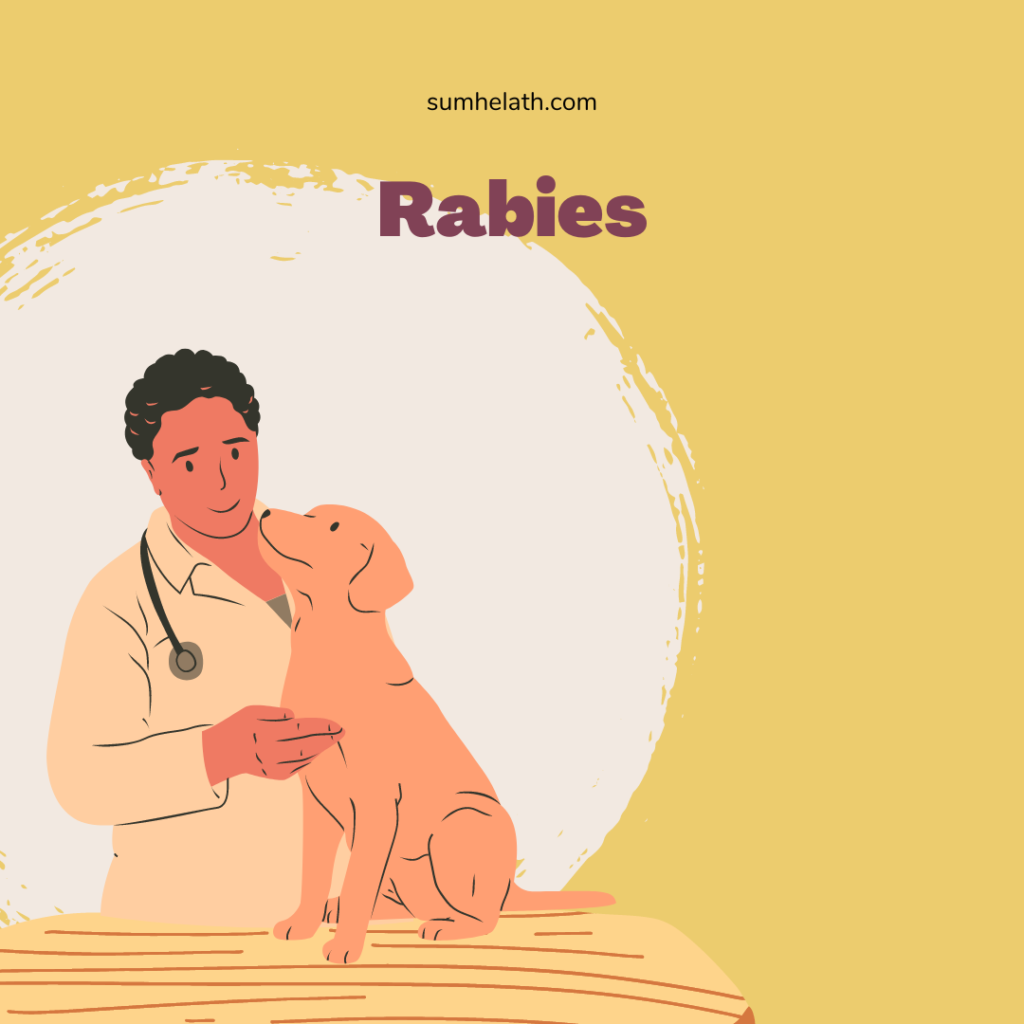Rabies
Introduction: Rabies is a viral disease that affects the nervous system of mammals, including humans. It is primarily transmitted through the bite or scratch of an infected animal. Rabies is a life-threatening condition but can be prevented through vaccination and timely medical intervention. In this article, we will explore the causes, symptoms, treatment, and prevention of rabies, providing you with a comprehensive understanding of this deadly disease.
- Causes of Rabies: Rabies is caused by the Rabies lyssavirus, which belongs to the Rhabdoviridae family. It is usually transmitted to humans through the bite of an infected animal, most commonly dogs, bats, raccoons, foxes, and skunks. The virus is present in the saliva of infected animals and enters the body through broken skin or mucous membranes.
- Symptoms of Rabies: The symptoms of rabies can be categorized into two forms: the prodromal stage and the furious or paralytic stage. The prodromal stage includes general symptoms such as fever, headache, fatigue, and discomfort at the site of the bite. As the disease progresses, the furious stage manifests with hyperactivity, excessive salivation, hydrophobia (fear of water), hallucinations, and aggression. In the paralytic stage, the muscles become paralyzed, leading to difficulty in breathing, swallowing, and eventually coma or death.
- Diagnosis and Treatment: Diagnosing rabies in humans is primarily based on clinical signs and symptoms, as laboratory tests may take time. If a person is suspected of being infected with rabies, immediate medical attention is crucial. Treatment involves cleaning the wound with soap and water, administration of rabies immunoglobulin (RIG) and the rabies vaccine. Once symptoms appear, the disease is almost always fatal, highlighting the importance of seeking medical care without delay.
- Prevention of Rabies: Preventing rabies is vital, and several measures can be taken to minimize the risk of infection:
https://www.cdc.gov/rabies/index.html
a. Vaccination: Vaccinating domestic animals, such as dogs and cats, is essential to prevent the spread of rabies. Regular vaccination boosts their immunity and reduces the chance of transmitting the virus to humans.
https://sumhelath.com/wp-admin/post.php?post=917&action=edit
b. Avoiding Contact with Wild Animals: It is crucial to avoid contact with wild animals, especially those displaying abnormal behavior. This includes refraining from petting or handling unfamiliar animals, especially bats.
c. Prompt Medical Attention: If you are bitten or scratched by an animal, promptly wash the wound with soap and water for at least 15 minutes and seek medical attention immediately.
https://www.cdc.gov/rabies/about.html
d. Rabies-endemic Areas: If you plan to visit areas where rabies is endemic, consult a healthcare professional regarding pre-exposure vaccination. This is especially important for travelers, explorers, or individuals working in high-risk environments.
Conclusion: Rabies is a deadly viral disease that affects both animals and humans. Understanding the causes, symptoms, treatment, and prevention measures is crucial for combating this life-threatening condition. By prioritizing animal vaccination, avoiding contact with wild animals, seeking immediate medical attention after potential exposure, and raising awareness, we can collectively work towards preventing the spread of rabies and protecting ourselves and our furry friends. Stay informed and stay safe!

